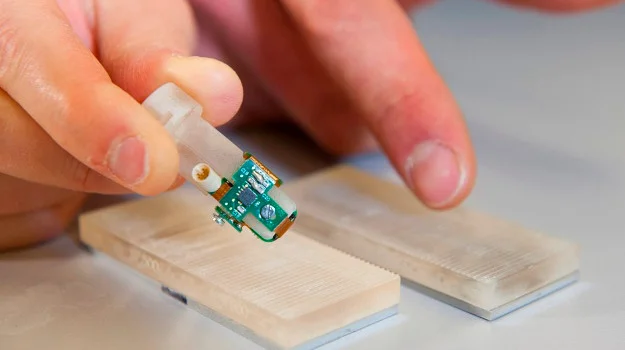Bionic Fingertip Allows Amputee To Feel Sense Of Touch Again
Image Credit: Hillary Sanctuary, EPFL
A man who lost his left hand has had his sense of touch restored with an artificial fingertip, which can detect pain, temperature and pressure.
Dennis Aabo Sørensen is the man to have received this prosthetic, and the science behind it is pretty incredible! Scientists from the Ecole polytechnique fédérale de Lausanne in Switzerland and an Scuola Superiore Sant’Anna research institute (SSSA) in Italy have created a device that uses electrical impulses to simulate the feeling of touch, and restore this feeling to the Sørensen's phantom limb.
Normally, these kinds of prosthetics haven't taken into account the sensation of feeling objects, but the team have tried to create certain levels of impulses to imitate the "language of the nervous system." In the tests, the artificial finger generated signals reflective of the surface its touching, which meant a stronger current for rough surfaces over smooth. In fact, Sørensen was able to interpret the surfaces he touched with 96% accuracy, which is really impressive!
“The stimulation felt almost like what I would feel with my hand,” Sørensen commented. “I still feel my missing hand, it is always clenched in a fist. I felt the texture sensations at the tip of the index finger of my phantom hand.”
For a control test, they also connected the bionic fingertip to non-amputees. The group had a lower average accuracy of 77%, but this is because their nerves weren't hard-wired to the finger, instead being connected using fine needles piercing the skin. Beyond this, every person's nerves create their own unique response to surfaces, so to acclimatise to a different form of feeling touch will not get the same level of accuracy.
So what's the future of this? Well this could be quite the liberating technology, granting amputees something they feel was gone a long time ago. “It will also be translated to other applications such as artificial touch in robotics for surgery, rescue, and manufacturing,” says Calogero Oddo of the BioRobotics Institute of SSSA.



